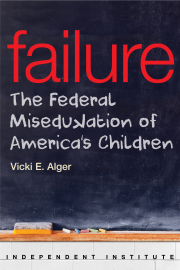Sixty years ago Nobel Prize–winning economist Milton Friedman argued that just because we finance K-12 education via government, this does not mean that elected officials know what type of education is best for other people’s children.
Fortunately, several educational choice programs are now empowering parents and helping put government back in its place.
Tuition tax-credit scholarships are one example. Unlike voucher scholarships, which are funded through government appropriations, tax-credit scholarships are funded by private donations, from individuals and businesses, to non-profit scholarship organizations. Donors can deduct varying amounts from their state income taxes, and parents can use scholarships to send their children to the private schools of their choice. Today, more than 225,000 students in 16 states are benefitting from these programs.
Education savings accounts (ESAs) are another great innovation. They empower parents with choices about how—not just where—their children are educated, bringing personalized learning to new heights. Parents who prefer alternatives to public school can simply withdraw their child, and the state deposits funds it would have sent to the school into the child’s ESA instead.
Parents receive a dedicated-use debit card for authorized expenses, and any leftover funds remain in the child’s ESA for future educational spending, including college. ESA funds are disbursed quarterly, after parents submit expense reports with receipts for verification. Regular audits also help prevent misspending.
Currently, five states have enacted ESA programs benefitting thousands of students. And so far this year ESA legislation has been introduced in at least three more states and the District of Columbia.
Parents participating in Arizona’s ESA program report an unprecedented 100 percent satisfaction rating. Program demand is also strong, roughly doubling each year.
ESAs and tax-credit scholarships are fiscally responsible, pass constitutional muster, are popular, and they get results.
“Education spending will be most effective,” Friedman insisted, “if it relies on parental choice and private initiative—the building blocks of success throughout our society.”
Today’s parental choice programs are helping make Friedman’s vision a reality. And not a moment too soon.









